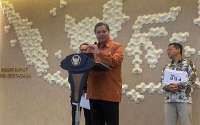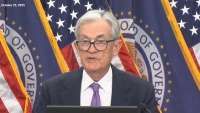FEDERAL RESERVE - WASHINGTON. Federal Reserve officials saw "little evidence" late last month that U.S. inflation pressures were easing, and steeled themselves to force the economy to slow down to control an ongoing surge in prices, according to the minutes of their July 26-27 policy meeting.
While not explicitly hinting at a particular pace of coming rate increases, beginning with the Sept. 20-21 meeting, the minutes released on Wednesday showed U.S. central bank policymakers committed to raising rates as high as necessary to tame inflation - even as they began to acknowledge more explicitly the risk they might go too far and curb economic activity too much.
"Participants agreed that there was little evidence to date that inflation pressures were subsiding," the minutes said.
Though some reduction in inflation, which has been running at four-decade highs, might occur through improving global supply chains or drops in the prices of fuel and other commodities, much of the heavy lifting would have to come by imposing such high borrowing costs on businesses and households that they would spend less, the minutes stated.
Read Also: IMF Holds Saudi Arabia 2022 Economic Growth Forecast at 7,6%
Participants emphasized that a slowing in aggregate demand would play an important role in reducing inflation pressures," the minutes said.
Yet despite that arch tone on inflation as their top concern, the minutes also flagged what will be an important dimension of the Fed's debate in coming months - when to slow down the pace of rate increases, and how to know if rate hikes have gone past the point needed to beat rising prices.
While judged as generally "dovish" by traders who increased their bets the Fed would approve just a half-percentage-point hike at the September meeting, Bob Miller, head of Americas Fundamental Fixed Income at BlackRock, said the minutes seemed to be giving the Fed more scope to react as data flowed in.
"The intended message was much more nuanced" and reflected a need to "optionality" by a central bank trying to assess conflicting economic data and shocks, he said. "Staking out some conditionality going forward seems sensible given the unprecedented nature of this particular cycle."
Read Also: Britain to Receive Rare LNG Cargo From Australia
The pace of rate increases indeed could ease as soon as next month, with the minutes stating that, given the need for time to evaluate how tighter policy is affecting the economy, "it would become appropriate at some point" to move from the large, 75-basis-point increases approved at the Fed's June and July meetings, to half-percentage-point and eventually quarter-percentage-point hikes.
But the ultimate level of interest rates seemed still very much in play.
"Some" participants said they felt rates would have to reach a "sufficiently restrictive level" and remain there for "some time" in order to control inflation that was proving far more persistent than anticipated.
"Many," on the other hand, noted the risk that the Fed "could tighten the stance of policy by more than necessary to restore price stability," particularly given the length of time it takes for monetary policy to change economic behavior.
Referring to the rate increases already telegraphed by the Fed, "participants generally judged that the bulk of the effects on real activity had yet to be felt," the minutes stated.
As of the July meeting, Fed officials noted that while some parts of the economy, notably housing, had begun to slow under the weight of tighter credit conditions, the labor market remained strong and unemployment was at a near-record low.
Read Also: Chinese Vice Premier Urges Greater Effort to Boost Consumption
INCOMING DATA
The Fed has lifted its benchmark overnight interest rate by 225 points this year to a target range of 2.25% to 2.50%. The central bank is widely expected to hike rates next month by either 50 or 75 basis points.
For the Fed to scale back its rate hikes, inflation reports due to be released before the next meeting would likely need to confirm that the pace of price increases was declining. Inflation by the Fed's preferred measure is more than three times the central bank's 2% target.
Data since the Fed's July policy meeting showed annual consumer inflation eased that month to 8.5% from 9.1% in June, a fact that would argue for the smaller 50-basis-point rate increase next month.
But other data released on Wednesday showed why that remains an open question.
Read Also: US Business Inventories Increase Solidly in June
Core U.S. retail sales, which correspond most closely with the consumer spending component of gross domestic product, were stronger than expected in July. That data, along with the shock-value headline that inflation had passed the 10% mark in the United Kingdom, seemed to prompt investors in futures tied to the Fed's target policy interest rate to shift bets in favor of a 75-basis-point rate hike next month.
Meanwhile, a Chicago Fed index of credit, leverage and risk metrics showed continued easing. That poses a dilemma for policymakers who feel that tighter financial conditions are needed to curb inflation.
Job and wage growth in July exceeded expectations, and a recent stock market rally may show an economy still too "hot" for the Fed's comfort.
/2019/03/19/222950654p.jpg)









